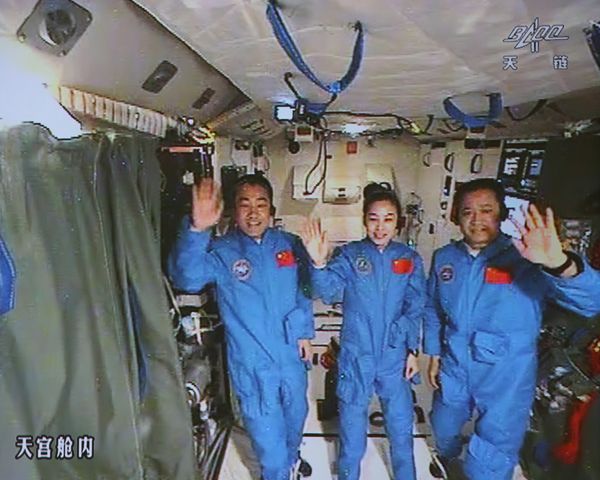Shenzhou X

In June, 2013, China implemented the Tiangong I / Shenzhou X manned spaceflight mission. The objectives of the mission are as follows: First, to launch Shenzhou X Manned Spaceship and provide crew and cargo transportation service for the orbit operation of Tiangong I target vehicle, thus further verify the rendezvous and docking technology as well as the function and performance of the space transportation system. Second, to further verify the supporting capability of Tiangong I for the life, work and health of astronauts as well as the capabilities of astronauts in carrying out space missions. Third, to carry out astronaut space environment adaptability and space operation ergonomics study, conduct space science experiments, spacecraft on-orbit maintenance experiments, and the first space class by taikonauts. Fourth, to further test the function and performance as well as the coordination of various systems of the engineering project.
At 17:38, June 11, 2013, the Shenzhou X spacecraft, with 3 astronauts aboard, blasted off atop a LongMarch 2F carrier rocket from the Jiuquan Launch Center and then entered into the orbit accurately.
At 13:18, June 13, after orbital injection, Shenzhou X spacecraft completed automatic rendezvous and docking with Tiangong I lab module via remote guidance from the ground and the spacecraft's autonomous flight control. At 16:17, the 3 astronauts successfully made their way into Tiangong I. From 10:04 to 10:52, June 20, in collaboration with Nie Haisheng and Zhang Xiaoguang, female astronaut Wang Yaping gave a space lecture to over 60 million students in China. Astronauts conducted experiments like mass measurement, pendulum motion, gyroscopic motion, water ball and water film. They demonstrated such physics phenomena as object motion characteristics in microgravity environment and water surface tension, and interacted with students via two-way video link.
At 8:26, June 23, in close collaboration with Zhang Xiaoguang and Wang Yaping, Crew Commander Nie Haisheng manually operated Shenzhou X to undock from Tiangong I, and berthed at a certain distance away from the space lab. At 10:07, Shenzhou X spacecraft was docked with Tiangong I again successfully, and then the astronauts entered the Tiangong I lab module again.
At 07:05, June 25, Shenzhou X spacecraft undocked from Tiangong I automatically and retreated to a certain distance away. Later on, Shenzhou X underwent orbital transfer control and flied around Tiangong I. During the process, under the accurate control of ground staff, Shenzhou X changed to forward-flying position while Tiangong I turned to backward-flying position. Then controlled by the ground, Shenzhou X approached Tiangong I, successfully completing near-distance rendezvous. China's first spacecraft fly-around rendezvous test achieved desired result.
At 07:19 June 26, Shenzhou X started up its re-entry procedure, and the reentry module landed precisely at the preset targeting area at 08:07. Then Tiangong I space lab reentered into its orbit for long-term operation.
During its on-orbit flight, Shenzhou X carried out a series of space science experiments and technical tests. The three astronauts lived and worked well in orbit.


